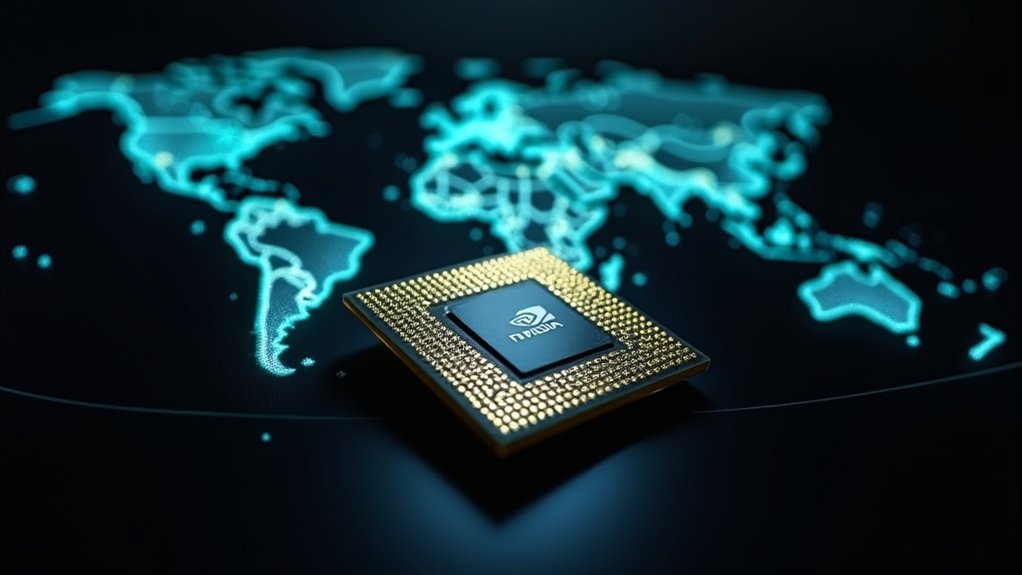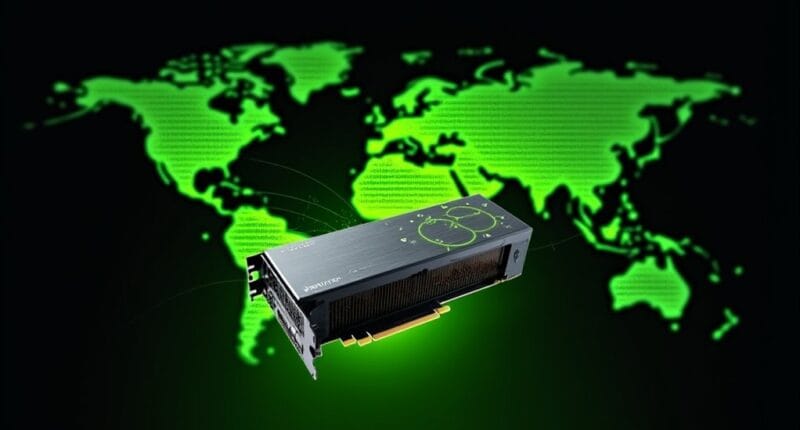Nvidia laughs in the face of trade restrictions. While U.S.-China tensions threatened to derail its momentum, the AI chip giant simply pivoted to new markets and kept innovating. With a crushing 92% share of data center GPUs and $130.5 billion in revenue, Nvidia’s dominance seems untouchable. The company’s ecosystem lock-in and revolutionary Blackwell architecture leave competitors eating dust. Their secret weapon? A knack for turning political headwinds into strategic opportunities.

Nvidia is crushing it in AI, and the numbers tell the brutal truth. With a staggering 92% share of the data center GPU market, worth $125 billion, Nvidia isn’t just winning – it’s demolishing the competition. The company’s fiscal 2025 revenue hit $130.5 billion, up 114% year-over-year. Yeah, you read that right. Double. And then some.
Dominating 92% of the GPU market with $130.5B in revenue, Nvidia isn’t just leading the AI race—it’s rewriting the rulebook.
Let’s be real: U.S.-China trade restrictions were supposed to slow Nvidia down. Spoiler alert – they didn’t. The tech giant simply pivoted, building stronger relationships in the Middle East and diversifying its customer base faster than you can say “semiconductor shortage.” While politicians played chess with trade policies, Nvidia played three-dimensional Go.
The secret sauce? It’s not just about the chips anymore. Nvidia has built an entire ecosystem around its technology. Their CUDA software stack and APIs are like a moat filled with digital piranha – good luck crossing that, competitors. The company’s Data Center revenue soared to $115.2 billion for the full year, a massive 142% increase.
And when they launched their Blackwell architecture, it wasn’t just another product release. It became the new standard for AI supercomputers globally, generating billions in sales during its first quarter. Rival AMD has shown impressive growth with a 179% increase in GPU sales, but still trails far behind Nvidia’s market dominance.
The company’s grip on AI infrastructure is borderline ridiculous. They’re not just selling hardware; they’re practically the operating system for the AI era. With over 80% market share in gaming GPUs and dominance in generative AI hardware, Nvidia’s position is about as fragile as a diamond fortress.
Their ecosystem is self-reinforcing: more developers use Nvidia’s tools, more enterprises adopt their platforms, and more cloud providers depend on their technology. It’s a virtuous cycle that keeps spinning faster.
The demand for AI training and inferencing isn’t slowing down – it’s accelerating. And with the AI chip market expected to hit $500 billion in the coming years, Nvidia isn’t just participating in the gold rush – they’re selling the picks, shovels, maps, and the whole dang mining operation.





